It often happens that the closet is full of things that are no longer wearable, but it is a pity to throw them away. Or a shirt is torn on the sleeve, but the rest is completely intact. The remaining fabric can be used in various ways, for example, to make a rug with your own hands. With due diligence, anyone can do this, just choose a convenient weaving technique and get to work
- Types of weaving techniques for carpets made of fabric
- Knitting
- Weaving
- Sewing
- Patchwork
- Tools and materials for work
- Step-by-step master class on making a rug from strips of fabric with your own hands
- Selection of materials
- Pattern
- Cutting of details
- Sewing 20 round pieces
- Assembling parts into a composition
- Firmware of "petals"
- Patchwork
- Woven rugs
Types of weaving techniques for carpets made of fabric
Make a beautiful rug from pieces of fabric using different technologies. The type of final product depends on the method you choose. If you choose one technique, the rug will be voluminous, if you choose another, you can get a flat rug for the bathroom. There are several of the most famous weaving methods.
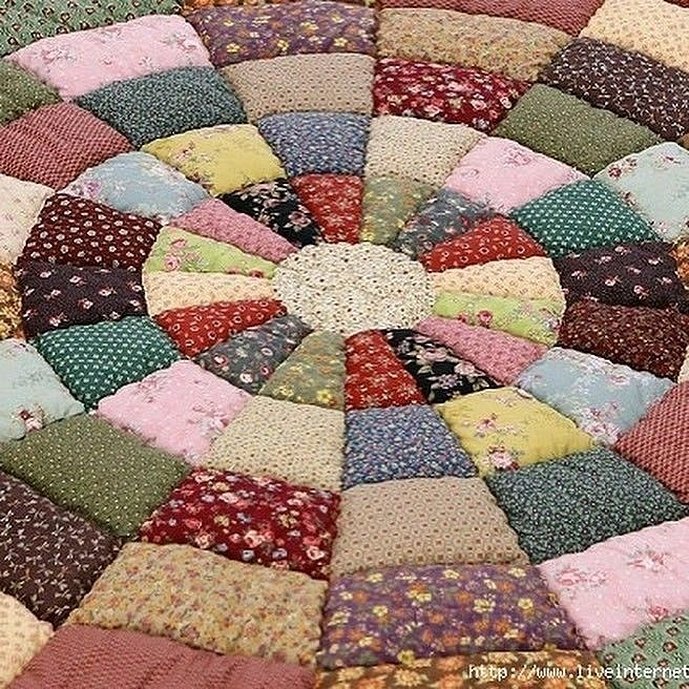
Knitting
The oldest of the presented methods. Making a rug is not very different from knitting a hat or a sweater, with the only difference being that the role of threads is played by fabric cut into thin strips. To get a decorative knitted rug for a balcony or kitchen, it is recommended to knit it with a thick hook. If you need a product for an open space, it is best to take elastic tights or a veil as the material used.

Weaving
If the room allows you to make a frame in it, then weave a carpet using tapestry technology. In order for the product to be conveniently hung, it is better to make the frame out of wood and hammer in nails where necessary. Unnecessary bed linen or robes are ideal for weaving, since the fabric should be long. Suitable material is cut into thin strips that will act as threads. A denser fabric is used for the base, while a less dense material is suitable for the transverse guide system; you can use knitwear.
The main thing is that the thread system is interwoven using the calico method with crimping. It is better not to use the twill and satin methods, since the threads may be too thick and will not be held in the finished product, as a result of which the rug made of strips of fabric will unravel.
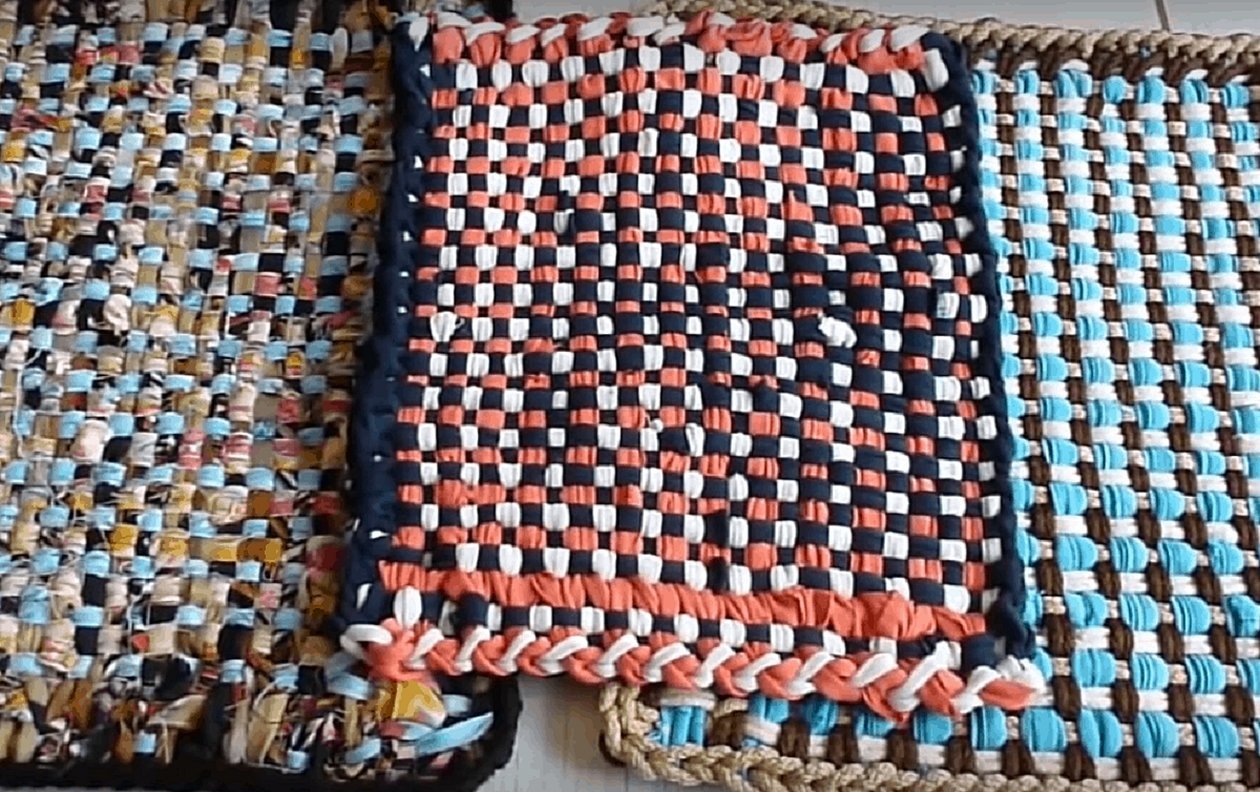
Sewing
In some regions of our country, there is an incomprehensible word "ryadushka". It means a blanket or a coverlet, and it most likely came from the name of rugs that were made by joining longitudinal rows of fabric. Such a decorative element can be made even now. For this, strips of fabric about 3 centimeters thick are cut.

Important! To make the stripes voluminous, they need to be folded in half along their entire length and stitched. Then a kind of rope is woven from them, which are connected to each other with a stitch on a machine until a path is formed.
Patchwork
If you have a lot of thick fabric, you can sew a rug from separate pieces of material. This method is used to make tablecloths, blankets or bedspreads, but it is also suitable for sewing carpets, as they must be resistant to abrasion. An even stronger fabric should be used as a base on which the patches will be sewn.
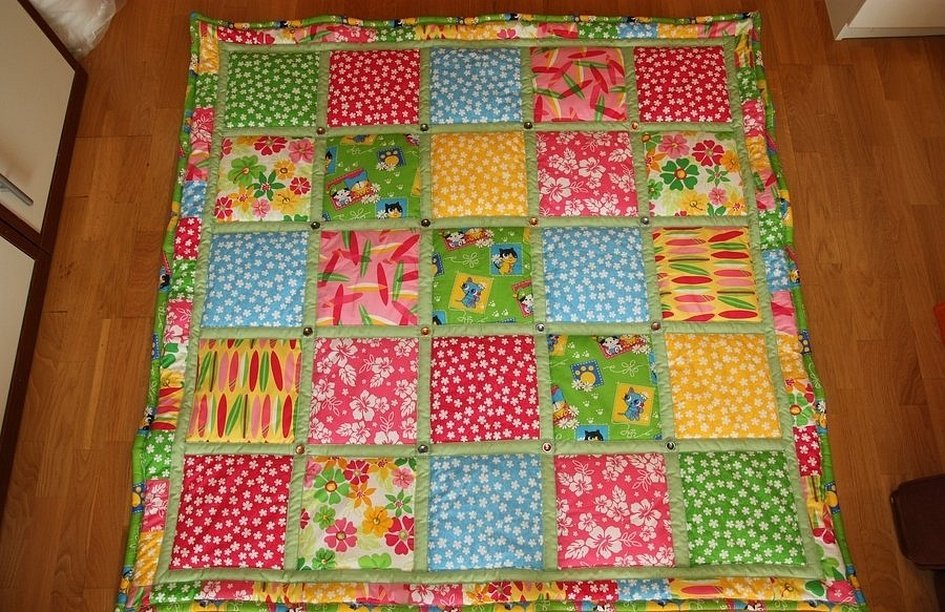
The details of the prepared material can be square, triangle or circle and any color, the main thing is to develop the design of the future product in advance. The selected fabric should be well connected to each other. This method can not only make something new, but also bring life back to old things, for example, to cover a shabby carpet or a worn bedspread.
Tools and materials for work
Each of the presented technologies has its pros and cons, and in order to choose the right method, you need to proceed from what tools and materials are available. Is there an unnecessary carpet, a sewing machine, the ability to make and fix a frame? After answering these questions, you can begin to make your own interior item.

To work, you will need sharp tailor's scissors first. They should be comfortable, because constant cutting can cause calluses on your hands. You should also buy a sharpener for scissors. For any work except knitting, needles and strong threads will be useful. A sewing machine, ribbons, tapes and cords will be needed if the carpet is made using the patchwork method. A frame, hammer and nails are necessary when weaving the product using the tapestry method.
Step-by-step master class on making a rug from strips of fabric with your own hands
There are many ways and sketches by which you can knit your product, but sometimes it is not entirely clear in what sequence and by what method the interior item is made. You can find many lessons on the Internet that describe all the steps in detail. If it is inconvenient to watch the video, then you should consider the main stages of carpet production in advance.
Selection of materials
You can choose any material for handicrafts. Jeans, shirts, dresses, blankets will do. But for an accurate choice, it is better to know in advance for which room the rug is being knitted. If you need to decorate a bedroom, then a fluffy and soft material will be ideal, but for a bathroom you will need a fabric that absorbs water well. In any case, the choice of material is free and is limited only by the possibilities and availability of the required material.

Pattern
The dimensions of the product may vary and depend on the size of the room and your own imagination. You can examine the cutting technique in more detail using the example of a rug consisting of 20 round parts. First, you need to make a template of the parts. If you do not have a compass, you can use a plate or a saucepan lid. Using these tools, draw an even circle on the material and cut out a circle along it.
Cutting of details
The template is placed on the fabric scraps and 20 pieces are cut out according to it. The same process is done with the carpet insulation.
Sewing 20 round pieces
The parts are laid out one on top of the other - the insulation underneath, the workpiece face down on top. The resulting "sandwich" is pinned around the entire circumference. Then a 5 mm indent is made from the edge of the workpiece, and a seam is laid. To prevent the fabric from sticking out after turning inside out, the seam allowances are cut. A wide cut is made on the edge of the sewn fabric, through which the part is turned out very carefully. The resulting flap is ironed. All 20 circles are prepared in this way.
Assembling parts into a composition
A cardboard square is placed on each piece so that its corners touch the circle, and outlined with a pencil. The circles are folded in pairs, with the cuts facing inward, and stitched along the markings. In this way, 4 blanks are connected and folded in a row.
They are pinned together and stitched together. The long sides of the resulting piece are also stitched together with a continuous stitch. These actions are continued until a carpet is obtained with dimensions of 4 circles in width and 5 in length.
Additional information! After all the parts are connected, they are carefully ironed in the steam mode, otherwise it will be uneven.
Firmware of "petals"
Each petal is evenly applied to the fabric and neatly stitched. Only the slits made on the back remain. You can ignore them, but it is better to process and sew them by hand.

Patchwork
Although the name of this method appeared relatively recently, blankets sewn using this technology can be seen in any village house.
To get a beautiful carpet, you need to follow the instructions exactly:
- Preparation of fabric. It is advisable to take bright and beautiful pieces.
- If the fabric is old, it needs to be ironed thoroughly.
- To prevent the finished product from deteriorating prematurely, you should prepare a base and a lining (batting or construction foam rubber).
- Cut the prepared fabric into pieces of the same size, taking into account allowances.
- The patches are laid out according to a pre-selected pattern. The first time, it is better to choose a simple pattern.
- To give the finished product softness and volume, a lining is placed between the base and the top fabric.
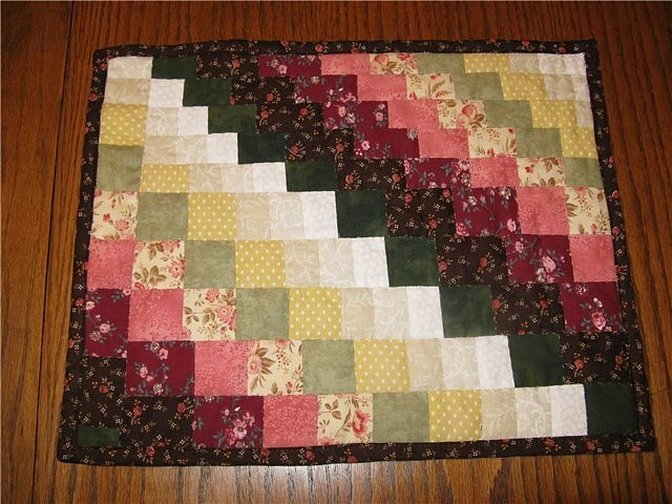
Woven rugs
A method that anyone can master, all you need is attention and patience.
The rug is made according to the following scheme:
- A large frame is taken, and if it is not available, then it is made in the required size.
- Nails are driven in at a distance of 3 cm on both sides of the frame.
- The fabric is cut into thin strips.
- The resulting strips are stretched onto nails.
- A bright strip is selected - the working thread, which is pulled through the stretched ribbons from top to bottom alternately. You will get something like a net.
- The weaving is done with brightly colored fabric.
- To ensure that the finished rug has a dense structure, the weaving is pulled upwards during the process.
- On the finished product, all knots and excess ribbons are removed to the back side.
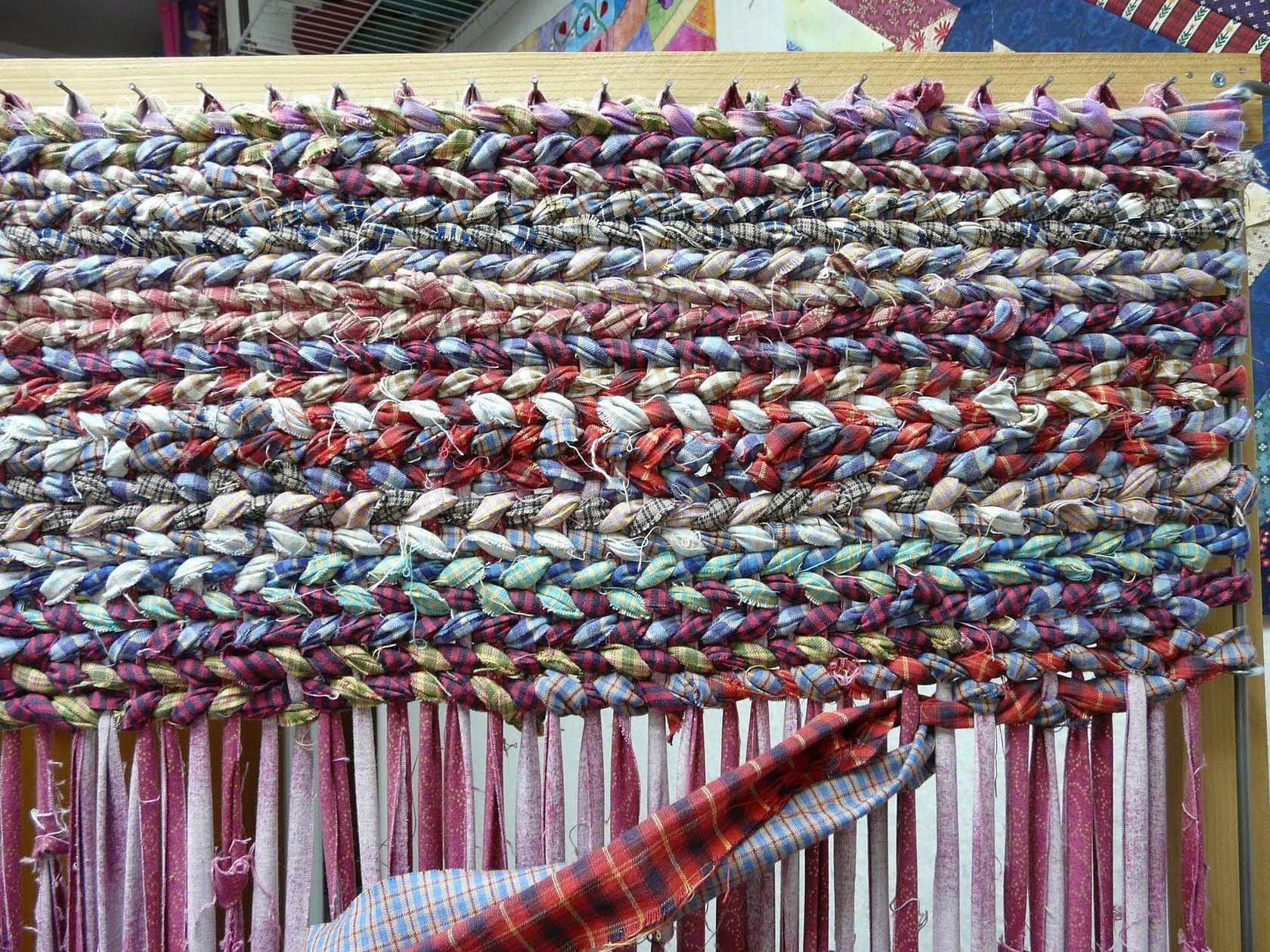
Having familiarized yourself with all the proposed options for making rugs at home, you can try to make a unique interior item for your home with your own hands. Fortunately, for most methods, everything you need is always at hand.




